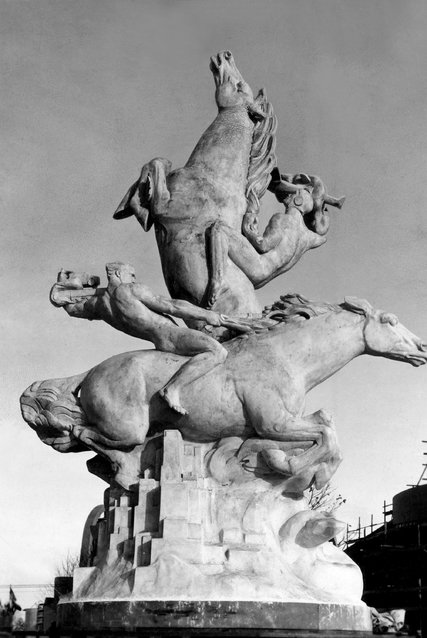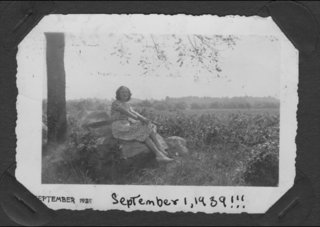Joan and her pal Dorothy used to make up poetry together. Here’s one of their less successful but more amusing efforts.
Monday March 12, 1939, Age 16
…. [A]s Dorothy was at typewriter and wanted to write, I decided to make up a super-modern poem so we did…Dorothy types by the hand-finger-search-method, much as I think and so we got along fine—for a while…it was super modern and I dictated lots of dots and no capitals…here is how it went….
tests…..
i hate them…
brutal, inhuman, repulsive, lowly…
my soul shrieks discreetly….
RELEASE…RELEASE
i am a goldfish in a deep grey ocean
tests are quicksand..they are eating away my soul…
horrible, ghoulish, suffocating…
….confidentially….they
….STINK.
Isn’t it beautiful….I think so. When we were done, Fraser sang out Iliadically, “Sing, Goddess,etc.” and I got up on a table to enunciate. When Barbara shouts joyfully, “Oh, good afternoon, Mr. Jacobsen” and I leapt unagilely down. Bang…and read it from the floor…to much applause.
I wanted to call it a poem in very blank verse but Fraser said then it would have to be in unrhymed iambic pentameter so I didn’t…Anyhow, it was well received and we put it up on the bulletin board entitled “Poem in the Very Modern Manner.” Rick didn’t quite understand the “goldfish” line:
Says he: “But goldfish don’t live in the ocean—“
Says I: “Well, that’s the idea—I’m out of my element.”
He: “O you’re marvelous …You ought to do something about that.”
Me: “I shall…”
Oh, but that was cute. Me standing on the table sprouting poetry.
Much fun was had by all.
Now, I’m sure Joan would be the first to agree that this poem is not, shall we say, of Shakespearean quality. But she and Dorothy had a fine collaboration and enjoyed themselves. Plus gave joy to others. Women in cahoots with each other–a theme in so many women’s lives.
Women helping women was the theme recently for me at the Story Circle Network Conference, a wonderful event that occurs every two years. Women writing life stories and memoirs gather, sharing their stories and techniques for producing heart-felt, passionate, funny, and moving stories from their lives and the lives of women they know.
Perhaps the most moving moment for me was when young Joan was honored by one of the presenters as her mentor in the field of oral history. Carole Garibaldi Rogers, the journalist, oral historian, and poet — and an old friend of my family — presented on From Census to Story: Bringing a Family Tree to Life.
As she introduced her material, she explained how my mother Joan, a long-time member of the same writing group with Carole, had been a nurturing mentor in the field of oral history.
Women helping women– over the decades and over millennia.
At the conference, I presented on From Family Documents to Published Book and shared tips from my learning process for Home Front Girl. One student had masses of oral history material. How to cut it down?
I cited, as always, my mom. Joan had said concerning her oral history interviews that there is always a story in the transcript. You have to create a short story out of that material and make it glow. Sometimes the person telling the story does not realize what the narrative arc of her own life is until she starts telling her tale. Maybe it is only the editor who polishes it into a coherent narrative. As I said, “I always listen to my mother.”

Susie teaching a workshop at the Story Circle conference. Thanks to Sallie Moffat for taking photos.
I’ve been blessed with many mentors–at Story Circle, Susan Wittig Albert, the amazing creator of the group, generous with wisdom and warm support.
And my pal, Laura Cottam Sajbel, who joins me in various writing gigs.
But most of all and always–Joan.














